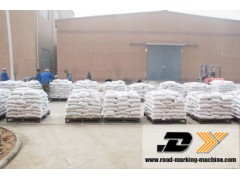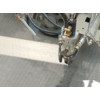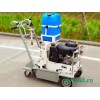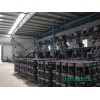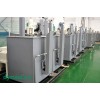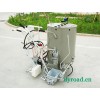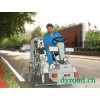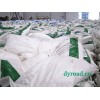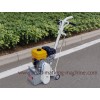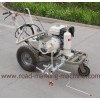Thermoplastic road marking paint, used for thermoplastic Road Marking Machine in road lines construction, possesses the characteristics of fast drying, thick coating, long lifttime and excellent constancy reflecting, and now has a dominant position in our country's high-grade highway. There are four types of thermoplastic road marking paint for sale , Thermoplastic Extrusion Road Marking Paint, Thermoplastic Screeding Road Marking Paint, Thermoplastic Spraying Road Marking Paint, Thermoplastic Vibrating (Convex) Road Marking Paint.
Features of Thermoplastic Road Marking Paint
1. Adhesivity: Unique formulation ensures good adhesion with the road surface. Before the construction, apply some special primer produced by our company on the road (especially on the cement roadbed) which will make the paint adhesive with the road strongly.
2. Skid resistance thermoplastic paint: Anti-skid additive is contained which ensures the excellent levelling and skid resistance of the road marking paints and maximally ensures the driving security.
3. Reflective Ability: Sufficient volume of high quality coating type glass beads with stable refractive index are contained in the paint. Scientifically choose mixed glass beads with different particles according to the glass beads' sedimentation rate in the paint to ensure the good reflective effect no matter the marking is new or old.
4. Fast drying: paints with different formulations Thermoplastic Paint supplier are provided according to the temperature, humidity and road conditions in construction, which ensures the paint with excellent drying speed and good antifouling.
5. Stability: mixed with raw materials of excellent light and thermoplastic road paint thermal stability. Anti-ultraviolet additive is added in the paint which is used in the strong sunlight areas to ensure the marking's original color and luster for a long time.
6. Anti-microcrack: road marking's microcrack is a big technical problem in the international road marking industry. After our long-term research, this problem has been solved completely by adding high temperature resistance lipid materials and functional structural materials.

